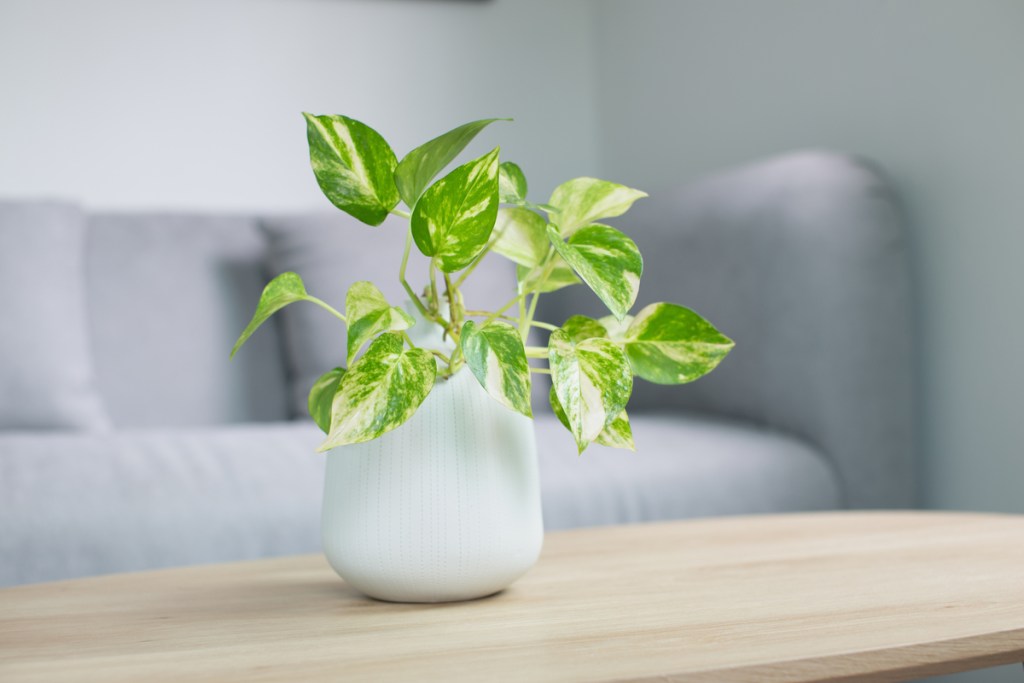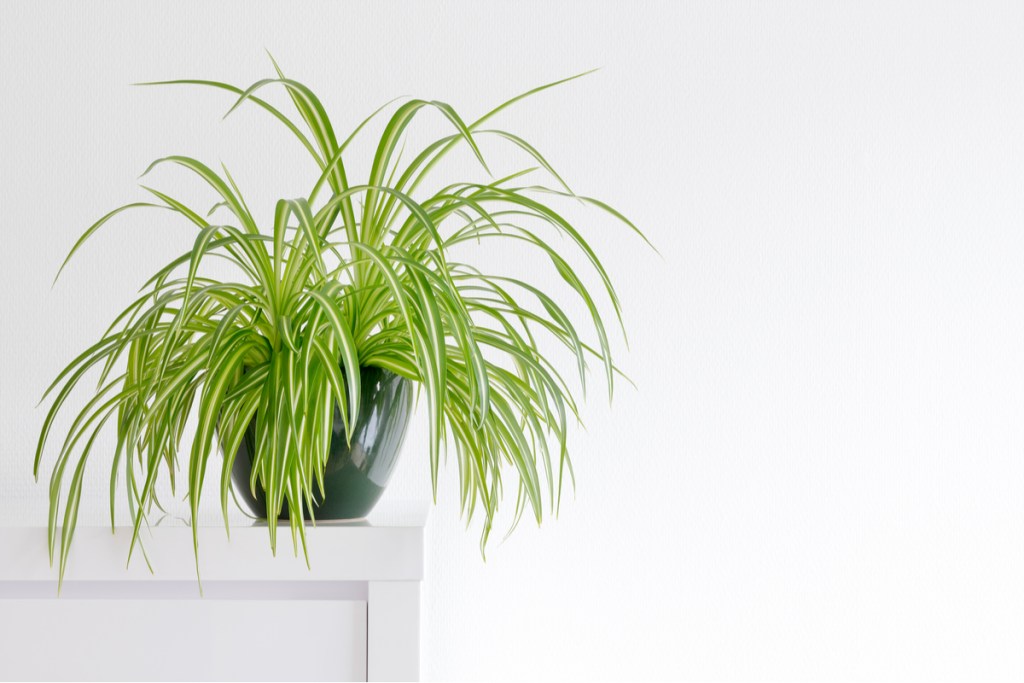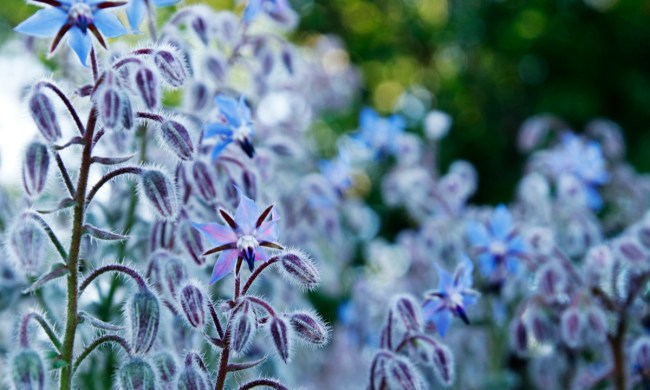If summer is growing season for most plants –– and the time of year when most plants can thrive outside –– why have indoor plants? Aside from just an added bit of greenery, there are actually a lot of reasons to keep plants indoors! Maybe you want to minimize risk of pests or add beautiful fragrances to your home. Maybe you have limited outdoor space or don’t have a lot of shade for the plants that hate direct sunlight. Whatever your situation, there are tons of amazing, wonderful plants to brighten up your indoor space.
Peace lily
Peace lilies have lovely blooms and are relatively easy-to-care-for plants. Although they love shade in their natural habitats (and can tolerate shade indoors), peace lilies grown inside need plenty of filtered light to thrive. They can be easily sunburned by direct lighting, so be sure to keep them away from any windows that receive intense sun throughout the day.
Pots for peace lilies should have a drainage hole, and the potting mix should be well-draining. Peace lilies prefer moist (but not soggy) soil and their leaves will start to yellow if they’ve received too much water. Having a pot with a drainage hole and a tray will give the excess water somewhere to go so the roots don’t sit in a puddle. Best of all, since it’s summertime, you won’t have to worry about maintaining an above 40 degree, non-drafty environment! As long as the environment and care is consistent, you should have no trouble with this beautiful flowers.

Golden pothos
The golden pothos is an indoor plant that looks its best in a hanging basket or on a shelf where the vines can cascade down. In their natural habitat, they grow rapidly. Indoors, they can be trained along trellises and hooks for a beautiful focal point in any sunny room. The golden pothos loves bright light, but can tolerate lower lighting and has air-purifying qualities, which is often why it’s chosen as a bathroom plant. The green leaves are beautifully marbled with yellow, which only becomes more pronounced when the plant receives the right kind of lighting.
Golden pothos love to have their soil dry out between waterings, which makes for a hardy houseplant that’s tolerant of a little bit of neglect if you go on vacation for a week or just forget to water it (happens to the best of us). When it needs a good drink, the leaves will start to droop. So if you’re concerned about overwatering, you can always wait for a signal from the plant! Just make sure you have a pot with good drainage so the roots don’t stay soggy, since that can cause root rot and make the plant susceptible to other diseases.
Bird of paradise
Because the bird of paradise doesn’t do well with midday direct sunlight, it’s a perfect plant to grow indoors where you can choose its location and not have to worry about how much natural shade covering it will receive throughout the day. They do like bright indirect lighting, though, so they should be close to a window that can supply that without it being too intense.
Birds of paradise are native to tropical climates, so love a good bit of humidity and aren’t tolerant of cold temperatures. For houses by water that have high humidity throughout the summer, a bird of paradise should have no trouble thriving! It’s important to keep in mind that the plant’s blooms depend both on maturity and conditions. It can take up to five years for a bird of paradise to bloom, and the chances are only increased when you give it the care it loves. And as with other tropical plants like the golden pothos, the bird of paradise loves moist soil.
Philodendron (any variety)
Philodendron care will vary a bit depending on which variety you choose, but you really can’t go wrong with any of them! There are some general care tips you can follow, but for any specifics, you should take a look at the variety and find out their special requirements. Most philodendrons will love any environment that mimics their natural tropical habitat. They love lots of warmth and higher humidity, which makes them perfect indoor summer plants for houses that live near water and don’t dry out much during the hotter months.
Keep in mind that direct sunlight can easily damage and burn their leaves, so you want to avoid any windows or doors that get an intense amount of sun throughout the day. If you want the leaves to look their best, be sure to water your philodendrons when the top inch of soil has dried out. Any over- or under-watering can cause the leaves to droop, so if this happens, you’ll need to inspect the soil to see how dry or wet it is to know which has happened. For additional leaf care, you can regularly dust them with a damp cloth to keep them looking fresh.

Spider plant
Spider plants are great houseplants for beginners, and even better houseplants for summer! Like the golden pothos, they have a cascading nature and will look incredible in a hanging basket or on a shelf. If you’re lucky, you’ll even get to enjoy baby spider plants on the ends of runners that grow from mature plants. These can be propagated or left attached to the parent plant for a unique look!
Spider plants, although tolerant of some neglect, will thrive with regular watering, which can be a bit time-consuming. Part of why it’s so good for beginners is because it has that balance of tolerance and high watering needs, so you can learn how to best care for a plant without killing it as soon as you miss a watering. Having a pot with good drainage is especially important because excess water can cause root rot (you’ll notice this is often consistent with most plants).
Monstera adansonii
The monstera adansonii (also known as the Swiss cheese plant and not to be confused with the monstera deliciosa) is an easy variety to care for when the right conditions are met. They have aerial roots that grow and allow them to cling like a vine to trellises or moss poles. They grow best in bright, indirect lighting and humid environments thanks to their natural tropical habitats. If you only have windows that receive direct sunlight throughout the day and don’t have something like curtains or a sheet to filter the lighting, you can try limiting the adansonii’s sun exposure to two to three hours in the morning.
The monstera adansonii loves being consistently moist but not soaked. A general rule of thumb for this plant is that if you stick your finger in and the first inch of soil is dry, it needs a bit of water. These plants will make beautiful accents for sunny homes, especially in the summer when there’s daylight, warmth, and humidity to spare.
If we’re being honest, the truth is: a majority of plants will thrive indoors during the summer. Why? It’s growing season! The amount of sunlight each day is up, it’s humid, and almost every plant is eager to get some new growth in before the end of fall. Sure, if you have space outside, they can go on your patio or deck or in your garden. But if you’re in an apartment or a house that doesn’t have much outdoor planting space, indoors during the summer is a wonderful place to grow plants. Any houseplant, as long is it receives proper conditions and care, will have no trouble thriving and brightening up your space.


